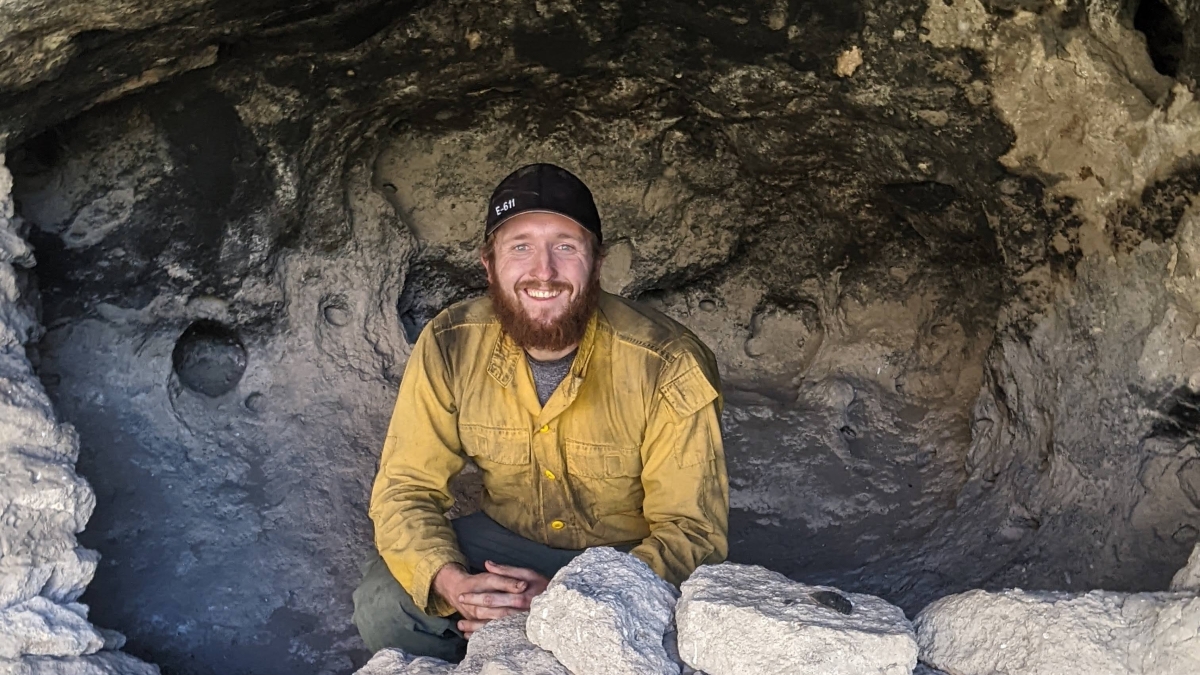ASU public affairs student, team wins wildfire plan competition

Ethan Clay, a wildland firefighter and graduate student in the ASU School of Public Affairs, represented a local community coalition during the competition. Photo courtesy Ethan Clay
A simulated community is safe from wildfires due to the decision-making skills of an Arizona State University graduate student and his teammates.
Ethan Clay, a student in the School of Public Affairs, just happens to be a wildland firefighter, which came in handy during the 2023 Wildfire Simulation Competition. The competition, sponsored by the Network of Schools of Public Policy, Affairs and Administration, pitted teams of students against each other as they learned how to respond to the challenges communities face in creating a Community Wildfire Protection Plan.
His team won the global challenge, besting 11 other teams that also had previously won regional contests, including eight in the U.S. Clay and his teammates competed against University of Colorado Denver students before moving on to conquer their global challengers. They assumed roles of people you’d expect to find around a conference table deciding how to protect a town surrounded by woodlands. Each team member was given a scenario describing which part of the community they would represent in the plan creation process. Clay represented a local community coalition.
Clay, who will graduate with a Master of Public Policy degree this May, was enrolled in one of Associate Professor Yushim Kim‘s classes when she encouraged him to enter the competition. The School of Public Affairs is part of the Watts College of Public Service and Community Solutions.
Clay was already familiar with how wildfire protection plans and policies are put together from his time as a firefighter. He understood the mechanics of involving stakeholders from government, business, nonprofits, environmental groups and the community at large.
“The process can be contentious because the priorities of each group or person may be different,” Clay said. “The plan comes together out of compromise.”
Kim said the simulation is designed to mirror reality as closely as possible.
“We teach these things in the classroom,” she said. “But what this brings is that we have a technology now that can create an artificial environment, and students can go and plan and learn what it looks like.”
Clay, who will return to his firefighter job later in May, said he was responsible for roleplaying the concerns community members would have about smoke and the threat of fire.
“It gave me newfound appreciation for what it’s like to be others,” he said. “It will help me with the communities I’m serving, how to compromise with all these officials and people.”
Kim said she is very happy that Clay had such a meaningful experience. “Hopefully, more students can be exposed to such an environment,” she said.
School of Public Affairs Director and Professor Shannon Portillo said she is “incredibly proud of Ethan’s achievement. This is the kind of applied learning that is core to academic programs ... at ASU.”
It’s important for students in his field to understand how to bridge gaps in trust between stakeholders in a policy situation, Clay said. The goal is for community stakeholders to view policy creation as a way to devise solutions that are best for all involved, rather than “the government telling people what to think.”
“It’s a theoretical environment, but it’s really hands-on,” Clay said. “I have a better idea of how to do this in the real world. We will all be in public service, so it’s about how I can expand my own view of things, and to account for the full spectrum of good policymaking.”
More Law, journalism and politics

Cronkite School launches Women Leaders in Sports Media live-learn program
Women in a new sports media program at Arizona State University got a solid game plan from a sports veteran at an Aug. 20 welcome…

ASU center to host the Pursuits of Education and Excellence Symposium
The Center for the Study of Race and Democracy (CSRD) at Arizona State University is introducing the Pursuits of Education and…
ASU journalism students dominate NATAS Student Production Award nominations
Students at Arizona State University’s Walter Cronkite School of Journalism and Mass Communication dominated the nominations…